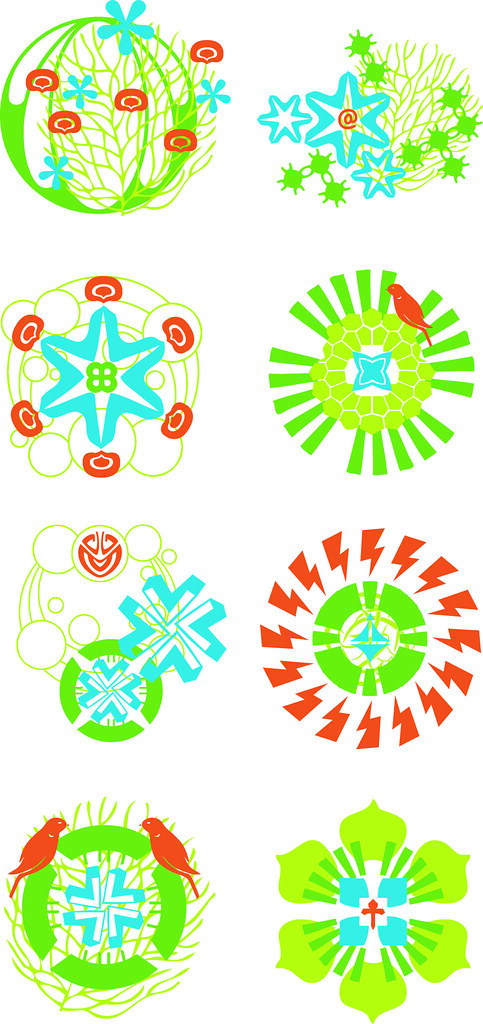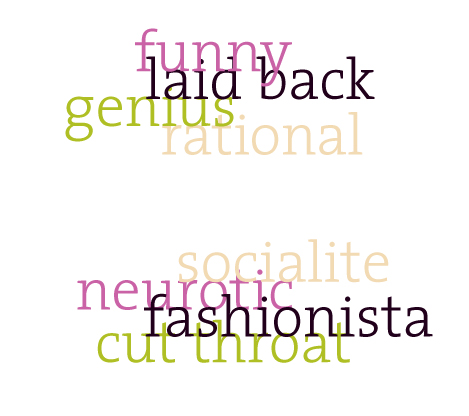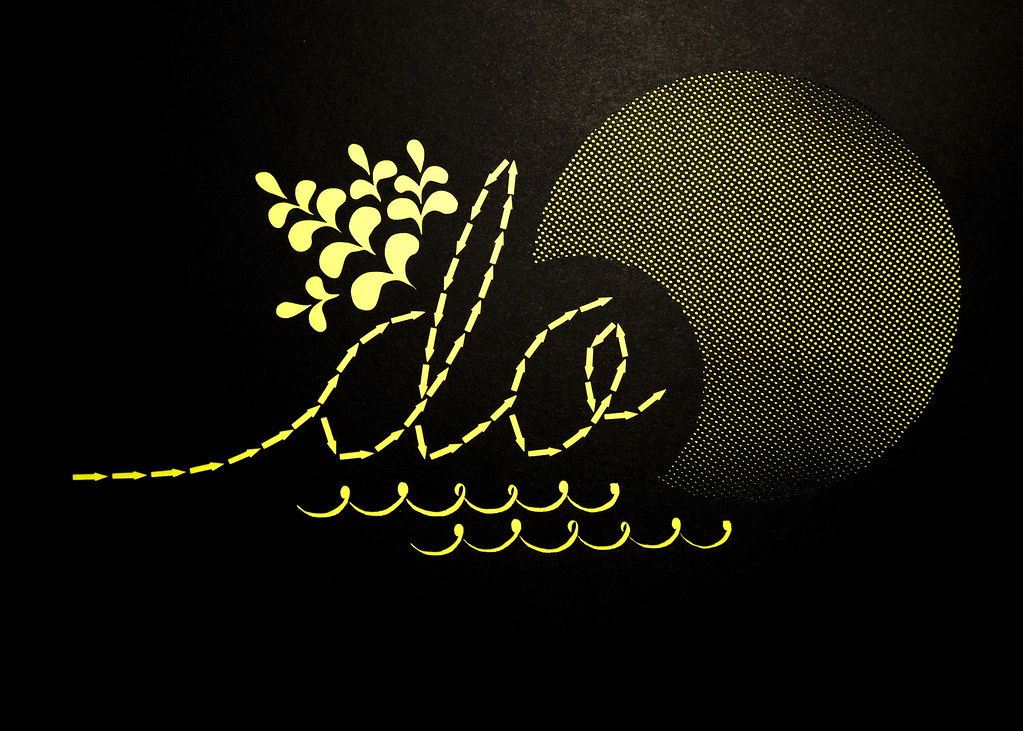
As second year students for Project 3 we are to "Propose and complete a design study that addresses an intersection (a point) rooted in (1) your thesis questions and (2) an aspect of the symposium theme "Design, Community and the Rhetoric of Authenticity." So I suppose it is time... time to unleash the researchable question that has remained under wraps for some time now. Please, treat it gently. It is just a babe, still in the making...
How can the design of interactive spaces lead a female college student through an evaluation of material consumption behaviors in relation to identity?
In these initial stages I find myself particularly interested in the notion of identity which fundamentally refers to the way in which one perceives one’s self. This could come from internal or external sources. But I am most interested in how this is persuaded by and communicated to the individuals peers and/or community. Thus the intersection. Identity and Community.
///////////////////////////////////////////////////////////////////////
In Thomas Cottle's book, Mind Fields, Cottle suggests that "...adolescents discover they are able to reflect on the stories they tell about others and themselves just as they are able to reflect on their own reflections. Their work, as it were, is to construct identities and develop a consolidated sense of self which they do in part from private reflection and in part from trying out bits of themselves, the products of these self-reflections, on the world. In sharing their reflections, adolescents open themselves to the possibility that their developing selves will be confirmed by others, although there is always the possibility of disconfirmation as well."
Erik Erikson expressed the notion this way: "The sense of ego identity, then is the accrued confidence that the inner sameness and continuity prepared in the past are matched by the sameness and continuity of one's meaning for others...." Believing this to be true, peer groups and gangs assume new significance, because peers contribute to the development of an individual's most private readings of his or her self."
This information on adolescents is particularly interesting because of my thesis focus on college aged women (18-22 years of age), but I do believe that the notion of reflecting on one's sense of self and trying out identities happens at many different stages of life, especially while in transition. Currently for myself I am attempting to establish what my own voice may be in the discourse of design. How your community and peers receives this expression of one's self is something that is often, if not always, considered.
Then I found this interesting study...
In the New York Times article, "Are Your Friends Making You Fat?" a pair of social scientists named Nicholas Christakis and James Fowler say, "they have for the first time found some solid basis for a potentially powerful theory in epidemiology: that good behaviors — like quitting smoking or staying slender or being happy — pass from friend to friend almost as if they were contagious viruses." Just some social science evidence for peer pressure? In the article they talked about visualizing the data they collected based on where people lived and how their weight fluctuated throughout the years. They saw that people gained and lost weight in "pods" throughout the community. This got me to thinking. In what ways are our own expressions of identity influenced by our peers and how may this be brought into consideration through illumination?
I discovered a school project of Marian Bantjes on Design Observer in which she explored the distinct graphic language of heraldry, the system by which coats of arms and other armorial bearings are devised, described and regulated. Bantjes describes that "heraldry is a lost vocabulary. Every symbol, shape, colour and arrangement of colour means something." In Bantjes project she uses the graphic language of crest making to develop system for logo making, in which everything means something (industry, size of company, mergers, etc) and thus the logo is read as an actual expression of the identity of the company.
This project was curious to me. These ultimately are expressions of identity and, while vast in numbers, similar elements are used throughout them all. Crests can be read and also related. They can show connections. Or rather, illuminate. I decided to do my own explorations in crest making and here is the plan I came up with:
IDEA 1:
Showing Connections to Peers.
Personal Crest Making:
Express values through a combination of symbols to create a crest or shield that represents the participants own (design philosophy) identity.
Pros: Illustrates connections
Cons: Little room for originality or personal expression.
Part 1 - Questionnaire:
1) participant is asked a series of questions based on relational facts. (where they live, who their friends are, where they were born, etc. This is to be used for placement of the symbols on a large "map" in order to illustrate connections.)
2) next the participant is asked a series of questions pertaining to their own values and sense of self. (this is used to create their personal expression in a crest/symbol)
Part 2 - Kit for Creation:
3) based on their responses they then get a kit of symbols/tools to for creation.
4) individuals with similar answers get similar symbols/tools
5) participant then has their own creative freedom to utilize the symbols to create their own personal identity crest.
Some ideas for how this could play out:
- participants walk into a room with bags with labels. If you associate with the label you grab the tool to create with out of the bag.
- stencils to create on shirt.
- participants complete the questionnaire digitally and then are provided with a set of tools/symbols and a space to create (like Illustrator). Then they submit their creation to be displayed on the larger map. And possibly create a wearable form of the identity crest.
- could be made using transparencies and projectors.
The idea is that people with similar values will be using the same tools and/or symbols. Their expressions with these things will vary but they will still be able to see the connections with like minded people.
Part 3 - Mapping Connections:
Ultimately the connections need to be visualized whether the participant is allowed to simply wear their identity crest and notice the connections amongst their peers or the creations are plotted on a digital map that groups the identity crests based on their responses to the relational questions (geographically, by friendships, etc.)
Could these be something that happens over time? People contribute over the course of time to build the map or graphic that grows and shows connections and associations.
IDEA 1 - PLAYING OUT:
Participants are asked a series of four questions with six possible answers. Based on each answer they are assigned a symbol to use for creating their identity crest.
Tools for creation for each question (each color represents a different question set):

Utilizing the one assigned symbol from each question (totaling four) and a bit of creative freedom the participant creates their own personal identity crest.
Some hypothetical identity crests:

///////////////////////////////////////////////////////////////////////
IDEA 2:
I am still interested in the connection between the outward expression/appearance and the inner thought. How authentic is the outward expression to the inner thought?
Language Labels: Expressions through language.
Playing off of the fears that may come from expressing an identity the individual answers questions about themselves based on scenarios that they may encounter and is then assigned a negative expression based on their decision.
EXAMPLE SCENARIO QUESTION:
My group of friends from the office are trying out a new restaurant for lunch, which is said to be kind of pricey. When they ask if I want to go I decide to...
a. go on ahead, money is not an issue.
b. go on ahead despite my budgeting restraints.
c. turn the offer down because I brought my own lunch and don't stray off the plan.
d. turn the offer down because I didn't budget for the extra $5 dollars the lunch will cost me.
Based on the answers the individual collects a negative word associated with their response.
a. pampered
b. weak
c. fuddy dud
d. tight wad
They continue to answer a series of questions which creates a collection of negative words that they then rate as more or less authentic. Do they then have to display this expression?
Some hypothetical word creations:

or
IDEA 2.5:
Still using the Language Labels. The idea is to attempt to create an authentic expression through language.
The individual answers questions about themselves based on scenarios that they may encounter. Then is given a range of expressions (from negative to positive) based on their decision in which they choose which best describes themselves (a.k.a. - the most authentic).
EXAMPLE SCENARIO QUESTION:
My group of friends from the office are trying out a new restaurant for lunch, which is said to be kind of pricey. When they ask if I want to go I decide to...
a. go on ahead, money is not an issue.
b. go on ahead despite my budgeting restraints.
c. turn the offer down because I brought my own lunch and don't stray off the plan.
d. turn the offer down because I didn't budget for the extra $5 dollars the lunch will cost me.
Based on the answers the individual is given a selection of words to choose from.
a. stable, spoiled, pampered
b. socialite, foodie, weak
c. rational, practical, fuddy dud
d. money smart, budgeter, tight wad
The creation is then a somewhat more authentic expression of their own identity.
Some hypothetical, aunthentic word creations:

[...]




